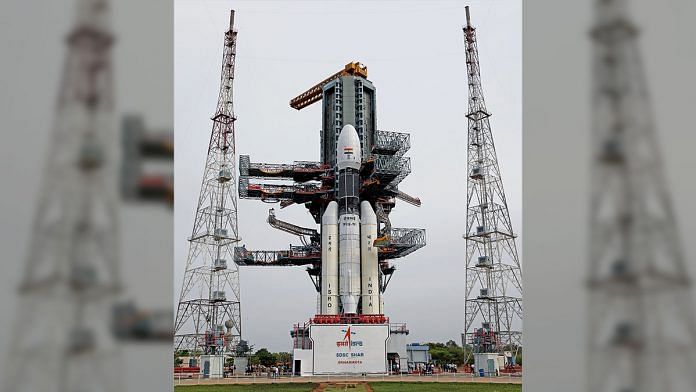Bengaluru: The new launch window for Chandrayaan-2 could potentially be after July as ISRO’s previously announced launch window for the India’s second probe to moon closes Tuesday.
The agency is expected to announce a new window for Chandrayaan-2 after Monday’s scheduled launch was postponed due to a “technical snag”.
A technical snag was observed in launch vehicle system at 1 hour before the launch. As a measure of abundant precaution, #Chandrayaan2 launch has been called off for today. Revised launch date will be announced later.
— ISRO (@isro) July 14, 2019
The glitch with the GSLV Mk III rocket was observed less than an hour before the launch of Chandrayaan-2. The fuel was in the process of being filled in when an issue was observed with the fuel conductor, according to officials.
The process says that engineers must first safely approach the rocket, empty the loaded fuel, and then carry the rocket back for investigation. It is expected to take a minimum of 10 days to carry out this course.
“As a measure of abundant precaution, Chandrayaan 2 launch has been called off for today. Revised launch date will be announced later,” said the official statement.
The development came as yet another stark reminder of just how difficult the business of space is. Rocket launches are regularly conducted all over the world, but the process of assembly, integration, testing and launch isn’t so simple.
Chandrayaan-2 too stumbled onto several roadblocks throughout the process, with its launch being postponed multiple times due to various failures during the testing and integration phase.
The details are as yet unclear as to what the technical glitch was that caused Monday’s launch to be pushed, but such last minute cancellations are not uncommon. This is especially true for interplanetary missions, which tend to be a lot more complicated than satellite launches.
Past issue with Chandrayaan-1 launch
ISRO has quite an impressive record when it comes to satellite launches with less than a handful of failures in its half-a-decade long history of successes.
But this moon mission’s predecessor, Chandrayaan-1, was also almost called off at the last minute too.
On 21 October 2008, a day before the scheduled launch, the PSLV rocket’s second stage was being filled with liquid propellants.
Liquid propellants have two things in them: a fuel (UH25) which burns when exposed to oxygen, and an oxidiser that provides the oxygen (Nitrogen tetroxide).
During the process of filing the fuel, the team noticed that there was a sudden thick, pink smoke that proceeded to cover the whole rocket. The only way to deduce the issue was to walk inside the potentially toxic fumes.
As M. Ramesh recalled in The Hindu Business Line, it turned out that there had been a tiny leak in the oxidiser tank with no damage to the rocket. The issue took several hours to be fixed and even recurred twice later.
The mission was almost called off as any subsequent leak with the oxidiser when loading in fuel would have resulted in a terrible explosion. But the team was able to determine that the risk would be contained and proceeded to launch successfully.
In the case of Chandrayaan-1, ISRO went ahead with the launch only as the engineers were 100 per cent certain that there wouldn’t be an explosion, as such failures lead to losses of billions for the taxpayer.
Now the Chandrayaan-2’s launch deference is likely to avoid any similar potential loss.
After all, the moon isn’t going anywhere and the launch window isn’t even restricted the way it is for other destinations like Mars (every 26 months).
Also read: As India prepares for another Moon mission, here is what makes Chandrayaan-2 special






